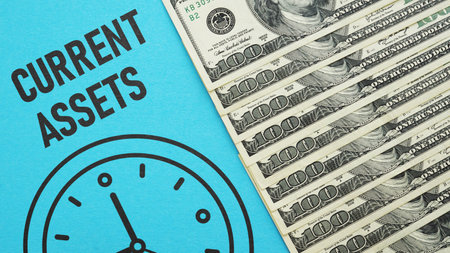Understanding Your Income and Expenses
Before you can build a successful monthly budget, you need to have a clear picture of your finances. This means knowing exactly how much money is coming in each month and where it’s going. Understanding your income and expenses is the foundation for any effective budgeting plan.
Track Your Take-Home Pay
Your take-home pay, also called net income, is the amount of money you receive after taxes and other deductions are taken out of your paycheck. If you get paid every two weeks or twice a month, add up all your paychecks to see what you actually bring home each month. Don’t forget to include any other sources of income, like side gigs, child support, or government benefits.
Example Table: Common Sources of Income
| Source | Monthly Amount ($) |
|---|---|
| Main Job (After Taxes) | 3,000 |
| Side Hustle | 400 |
| Child Support | 300 |
| Total Monthly Income | 3,700 |
Identify Your Expenses
Next, list all your monthly expenses. In most American households, these fall into two categories: fixed and variable expenses.
Fixed Expenses
These are costs that stay the same each month. Examples include:
- Rent or mortgage payments
- Car payments
- Student loan payments
- Insurance premiums (health, auto, renters)
- Cable and internet bills
Variable Expenses
Variable expenses can change from month to month. Some common examples are:
- Groceries
- Gasoline or public transportation fares
- Dining out or takeout food
- Entertainment (movies, concerts, streaming services)
- Utilities (electricity, water)
- Personal care (haircuts, toiletries)
- Shopping (clothes, household items)
Sample Monthly Expense Table
| Expense Type | Description/Example | Average Monthly Cost ($) |
|---|---|---|
| Fixed | Rent/Mortgage | 1,200 |
| Fixed | Car Payment | 300 |
| Fixed | Cable & Internet | 100 |
| Variable | Groceries | 400 |
| Variable | Dine Out/Takeout Food | 150 |
| Variable | Utilities (Electricity/Water) | 120 |
| Total Estimated Expenses per Month: | $2,270 | |
The Importance of Tracking Everything Regularly
You don’t have to memorize every penny spent at Starbucks or Target right away—but start by writing down all your regular bills and common spending categories. Use a notebook, spreadsheet, or budgeting app to keep track. The more accurate you are with recording both income and expenses, the better prepared you’ll be to make smart financial decisions in the next steps of building your monthly budget.
2. Setting Realistic Financial Goals
Before you can build a budget that works, it’s important to set financial goals that fit your lifestyle and reflect common U.S. money habits. Clear goals give you motivation and direction, making it easier to stick with your budget each month.
Short-Term vs. Long-Term Goals
Start by thinking about what you want to achieve with your money in the next few months and over the coming years. Here’s a simple breakdown:
| Goal Type | Examples | Time Frame |
|---|---|---|
| Short-Term Goals | Building an emergency fund, paying off a credit card, saving for a vacation | Within 1 year |
| Long-Term Goals | Buying a home, saving for retirement, paying off student loans | 1 year or longer |
Tips for Setting Achievable Goals
- Be Specific: Instead of “save more,” say “save $500 for emergencies in 6 months.” This makes tracking progress easier.
- Make It Measurable: Decide exactly how much money you need and when you want to reach your goal.
- Prioritize: List your goals from most to least important. Focus on one or two top priorities first.
- Keep It Realistic: Make sure your goals match your current income and expenses so you don’t get discouraged.
- Write Them Down: Put your goals where you can see them—on your phone, fridge, or planner—to stay motivated.
Aligning with American Financial Norms
Many Americans aim to keep at least three to six months’ worth of living expenses in an emergency fund. Another popular goal is contributing regularly to a 401(k) or IRA for retirement savings. If you have student loans or credit card debt, setting up a plan to pay these down is also a common focus.
Sample Monthly Goal Tracker
| Goal | Total Needed | This Months Target | Status |
|---|---|---|---|
| Emergency Fund | $1,500 | $250 | $100 saved so far |
| Credit Card Payoff | $800 | $200 payment planned | $50 paid this month |
| Vacation Savings | $600 | $100 this month | $20 saved so far |
If you break big goals into smaller monthly targets, it’s easier to track progress and celebrate small wins along the way. Adjust your goals as needed based on changes in income or unexpected expenses.

3. Creating a Personalized Monthly Budget
Building a monthly budget that actually works for your lifestyle is all about knowing your needs and using the right tools. In the U.S., many people find success by following simple, proven budgeting methods and using easy-to-use apps designed for Americans. Here’s how you can get started:
Popular Budgeting Methods
One of the most popular ways to manage your money in the U.S. is the 50/30/20 rule. This method breaks down your income into three main categories:
| Category | Percentage of Income | What’s Included |
|---|---|---|
| Needs | 50% | Rent/mortgage, utilities, groceries, transportation, insurance |
| Wants | 30% | Dining out, entertainment, hobbies, travel |
| Savings & Debt Repayment | 20% | Savings accounts, retirement funds, paying off loans or credit cards |
This rule helps you quickly see where your money should go each month. It’s flexible enough for most lifestyles and makes it easier to stick to your financial goals.
Budgeting Apps Americans Love
If you want to make budgeting even simpler, try using an app that does the heavy lifting for you. Here are two top picks that are especially popular in the U.S.:
Mint
Mint connects to your bank accounts and automatically tracks your spending in real time. You can set custom budgets for different categories and get alerts when you’re close to hitting your limits. Mint also gives you a clear overview of all your bills and subscriptions in one place.
You Need a Budget (YNAB)
You Need a Budget (YNAB) takes a different approach by helping you assign every dollar a job. It encourages proactive planning so you know exactly where your money will go before you spend it. YNAB offers helpful workshops and guides to teach you smart money habits.
Tips for Making Your Budget Work for You
- Be Realistic: Make sure your budget reflects what you truly spend each month—don’t forget occasional expenses like birthday gifts or car maintenance.
- Review Regularly: Check in weekly or monthly to see if any adjustments are needed based on changes in income or expenses.
- Automate When Possible: Set up automatic transfers to savings or bill payments so you don’t have to think about it every month.
- Stay Flexible: Life happens! If something changes, update your budget so it always matches your current situation.
The right budgeting method and tools make it much easier to manage your money confidently, no matter what life throws at you.
4. Sticking to Your Budget: Habits and Hacks
Smart Habits to Stay Disciplined
Building a budget is just the first step—the real challenge is sticking to it. Developing daily and weekly habits can make a big difference in helping you reach your financial goals.
- Track Your Spending Regularly: Check your bank app or budgeting tool at least once a week.
- Set Spending Alerts: Most banks and apps let you set alerts when you’re close to your limit.
- Review Your Budget Monthly: Adjust categories as needed if you consistently overspend or underspend.
Avoiding Common Spending Triggers
It’s easy to go over budget without realizing it, especially when faced with common spending temptations. Here’s how you can avoid them:
| Trigger | Tip to Avoid |
|---|---|
| Online Shopping Sales | Unsubscribe from promotional emails or use browser extensions that block sales pop-ups. |
| Dining Out Too Often | Plan meals ahead and keep easy-to-make dinners at home for busy nights. |
| Impulse Buys at Stores | Create a shopping list before heading out and stick to it—don’t shop when hungry! |
| Social Pressure | Suggest free or low-cost activities with friends, like picnics or hikes. |
American-Specific Budgeting Hacks
The U.S. has unique ways to help you stretch your dollars further. Here are some practical tips you can use:
- Cashback Rewards: Use credit cards that offer cashback on groceries, gas, or online shopping—but always pay off your balance monthly to avoid interest charges.
- Loyalty Programs: Sign up for rewards programs at stores you visit often (like grocery chains, pharmacies, or coffee shops) to earn discounts or freebies.
- Coupon Apps: Download popular coupon apps like Rakuten, Ibotta, or Honey to find deals before checking out online or in person.
- Bills Negotiation: Don’t be afraid to call your service providers (internet, cell phone, insurance) and ask about better rates or current promotions—many Americans save hundreds this way each year.
Your Personalized Action Plan
The key is consistency—try picking one new habit each month to add into your routine. Over time, these small changes will help you stay on track and make budgeting feel second nature. Remember, progress is more important than perfection!
5. Reviewing and Adjusting Your Budget
Building a budget is just the first step—it’s just as important to check in regularly and make adjustments as life happens. Here’s how you can assess your progress, tweak your plan, and stay on track even when surprises hit.
Why Review Your Budget?
Your monthly expenses and income can change over time. Maybe you got a raise, picked up a side gig, or faced an unexpected car repair. Reviewing your budget helps you spot where you’re crushing it—and where you might be overspending.
How Often Should You Check In?
Most people find it helpful to review their budget once a month. Some like to do a quick weekly check-in, especially if they’re new to budgeting or using cash envelopes. Mark it on your calendar or set a reminder in your phone so it becomes part of your routine.
Monthly Budget Check-In Table
| Step | What To Do | Questions To Ask Yourself |
|---|---|---|
| 1. Compare Budget vs. Actual Spending | Look at what you planned versus what you actually spent. | Where did I spend more or less than expected? |
| 2. Identify Patterns & Trends | Spot any recurring overages or savings. | Are there categories I always go over? |
| 3. Adjust Categories As Needed | Move money between categories or cut back if needed. | Should I increase my grocery budget? Can I trim dining out? |
| 4. Prepare for Upcoming Expenses | Add one-time costs (birthdays, travel, back-to-school supplies). | Any special events coming up next month? |
| 5. Celebrate Wins & Set Goals | Acknowledge areas where you stayed on track and set new targets. | What worked well this month? What will I focus on next? |
Bouncing Back from Unexpected Expenses
No matter how carefully you plan, surprises happen—a medical bill, home repair, or last-minute trip. Don’t let these throw you off course! If something pops up:
- Tweak Your Categories: Shift funds from non-essential spending (like entertainment) to cover the new expense.
- Dive Into Emergency Savings: That’s what it’s there for! Just remember to rebuild it over time.
- Avoid Debt When Possible: Try not to rely on credit cards unless absolutely necessary.
- Review and Learn: After the dust settles, adjust your budget so you’re better prepared next time.
Staying Motivated and Resilient
If things don’t go perfectly every month—don’t sweat it! Building strong money habits takes practice. Keep tracking your progress, make small changes, and remember: sticking with your budget is about progress, not perfection.


